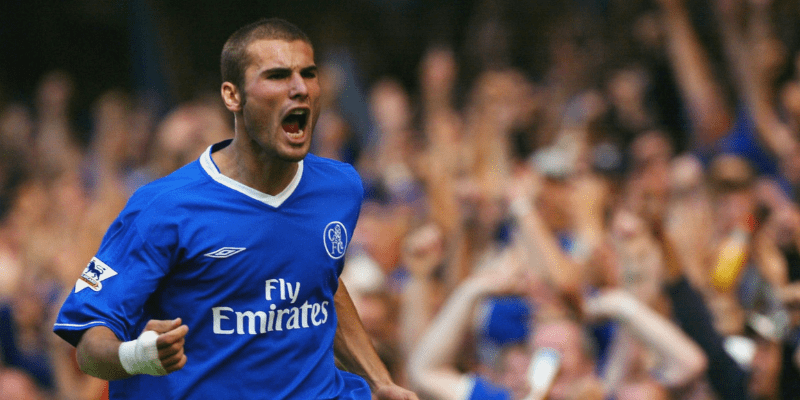Chelsea’s spending has often been as headline-worthy as their trophies. But what exactly is the Chelsea transfer record today? In this article, SanaaGoal will guide you through the evolution of the Chelsea transfer record, the biggest deals in club history, the successes and flops, and what the future might hold for the Blues in the transfer market.
What Does “Chelsea Transfer Record” Mean?

When people refer to the Chelsea transfer record, they usually mean the most expensive incoming transfer fee ever paid by Chelsea to acquire a player. Depending on context, it might also include add-ons or bonuses, but for clarity we’ll focus on the base fee or reported guaranteed cost.
Over time the term has evolved: what seemed unattainable a decade ago now feels normal for top clubs. Considering market inflation, loan structures, and performance-based clauses, the raw number doesn’t always tell the full story—but it’s the headline grabber.
Here’s how Chelsea’s record deal has evolved and where it stands now.
Evolution of Chelsea’s Transfer Record Over Time
The Early Big Signings
Chelsea’s spending began to escalate under Roman Abramovich’s ownership starting in 2003. Early marquee moves such as Verón to Chelsea were costly at the time, though far from today’s scale.
In 2005, the signing of Michael Essien from Lyon for around £24.4 million (then a club record) was a landmark moment—showing Chelsea were ready to compete financially with Europe’s elite. edia])
2010s: Growing Ambition, Growing Price Tags
As the Premier League boomed and TV deals exploded, Chelsea’s transfer ambitions grew. Deals like Kepa Arrizabalaga, Timo Werner, Christian Pulisic, and João Félix pushed the club’s internal records higher, though none eclipsed what was coming next.
The 2020s: Record Broken — Again and Again
The current age of hyper-inflated fees brought new extremes. In January 2023, Chelsea shocked the football world by signing Argentine World Cup winner Enzo Fernández from Benfica for a base fee of £106.8 million. That deal broke the British transfer record at the time and became Chelsea’s highest-ever paid transfer.
But Chelsea didn’t stop there. Just months later, in August 2023, they signed Moises Caicedo from Brighton for a reported £115 million (including guaranteed components), pushing the Chelsea transfer record even further. That fee also reset the British transfer record against rivals.
Even beyond that, Chelsea’s spending spree continued under new ownership, making their overall squad value among the most expensive ever assembled in Europe., Chelsea’s 2024 squad cost about €1.656 billion in combined transfer investments. reuters.com])
Thus, as of now, the Chelsea transfer record is held by Moises Caicedo — though context and add-ons might muddy how that compares to Enzo’s deal in simpler, guaranteed dollars.
Top 7 Most Expensive Chelsea Signings

Below is a snapshot of Chelsea’s biggest spls, showing how far the blues have come in the transfer arms race:
| Rank | Player | Year | Reported Fee | From Club |
| 1 | Moises Caicedo | 2023 | ~£115 million | Brighton |
| 2 | Enzo Fernández | 2023 | £106.8 million | Benfica |
| 3 | Romelu Lukaku | 2021 | ~£97.5 million | Inter Milan (return) |
| 4 | Mykhailo Mudryk | 2023 | ~€70 million (rising toward €100m) | Shakhtar Donetsk |
| 5 | Kepa Arrizabalaga | 2018 | roughly £71 million | Athletic Bilbao |
| 6 | Christian Pulisic | 2019 | ~£57.6 million | Borussia Dortmund |
| 7 | Álvaro Morata | 2017 | ~£58 million | Real Madrid / Atlético context |
Note: These are primarily reported base fees, excluding performance-based add-ons and contingent payments. Figures may vary by source.
Some deals like Mudryk’s were structured with significant add-ons, meaning his eventual total could rival or surpass some above him.
Successes and Failures Among Chelsea’s Record Buys
Spending big is risky. Let’s look at how some of Chelsea’s most expensive signings fared on the pitch.
Hits That Justified the Outlay
- Enzo Fernández: Despite adapting pains, he’s become a central piece of Chelsea’s midfield engine and earned praise for linking defense to attack.
- Kepa Arrizabalaga: A mixed legacy—he had moments, though his consistency issues and infamous errors tainted his tenure.
- Pulisic: Injuries hindered his impact at Chelsea, but he often showed glimpses of top-class ability in flashes.
Big Money Misfires
- Romelu Lukaku (2021 return): Expectations were sky-high, but injuries, tactical mismatch, and form issues led to underwhelming returns.
- João Félix: Signed on big promise, but he failed to cement a place in the team, and Chelsea moved him on quicker than fans expected.
- Mykhailo Mudryk: Still fresh in memory — he’s had bright moments but inconsistency and adaptation challenges remain.
Through these stories, we see that money alone doesn’t guarantee success. Integration, coaching stability, injuries, and mental adaptation all play roles.
Why Chelsea Keep Breaking Their Own Record
So why does Chelsea continue rewriting their own spending record? Here’s what drives it:
- Desire to compete with elite clubs: To match spending by the likes of Manchester City, PSG, Real Madrid.
- Transfer inflation: The general market keeps pushing fees upward.
- Owner ambition & impatience: New owners want instant returns — so they splash early and often.
- Brand appeal: High-profile signings attract attention, sponsors, and global support.
- Competitive pressure: Signing a top target forces rivals’ hands, maintaining transfer arms race dynamics.
Chelsea’s approach reflects modern football’s reality: to compete at the top, you need bold investments, but also surgical decision-making.
What Next? Will the Chelsea Transfer Record Fall Again?

Given the trajectory, it’s almost inevitable the Chelsea transfer record will be broken again. A few names have already cropped up in rumors:
- Midfield maestros: Chelsea are reportedly monitoring several world-class midfielders — possible successors to Caicedo or Enzo.
- Young talents with resale potential: The next record signing might come in the form of a 19 or 20-year-old—big fee, big upside.
- Football economics shift: As inflation and broadcast deals escalate, even record fees might look modest in five years.
A caution: with Financial Fair Play rules and club sustainability coming under more scrutiny, Chelsea may also steer toward clever structuring (installments, add-ons, swap deals) to manage their books.
Conclusion
The Chelsea transfer record is more than just a number — it’s a symbol of ambition, risk, and legacy. From Essien’s then-massive fee to Enzo’s blockbuster move and now Caicedo’s staggering price tag, Chelsea’s transfer history tells a story of financial escalation and competitive hunger. As SanaaGoal wraps up: if you’re tracking transfer records, club investment, or big-money signings, this is your go-to reference. Watch closely — the next record-breaker may already be in the works.






